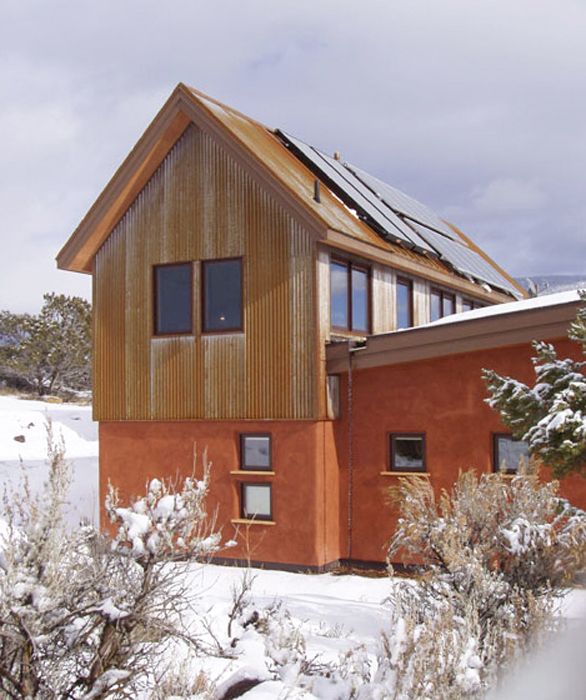
The song of the loon: “If you have heard it, you know it is a sacred thing … if you have not heard it, you had better hurry to where they still sing.” Mary Oliver
Straw-bale house construction is undergoing a revival in our country. There seem to be many reasons for this. First, the basic building material, dry straw left over from harvesting grains like wheat, rye, and rice, is easily obtained at a reasonable cost from local sources in our farming states. Much of the work needed to build with straw bales can be done by semiskilled workers. Community-minded people, friends and neighbors, can come together for a “bale-raising” party.
As citizens become more conscious of how our activities affect our world, they want to use products that are friendlier to our environment. ‘Environmentalist’ is no longer a four-letter word among growing numbers of people. Straw is a natural material that is nontoxic and biodegradable. You can actually live in a strawbale house without fear of breathing in and getting sick from toxic fumes emitted by many common construction products. The energy used to cut and bale this material is less than that used to make a wood or steel product. Further, a bale house is well insulated, so it needs less energy to keep it warm or cool. Finally, it is my experience that people who build with straw realize that this medium can allow them to be creative. Straw can be sculpted into forms and shapes that make a house into a warm and inviting home.
My mother taught school in a haybale house when she was a young woman in 1916 in the Sandhill country of western Nebraska. These country school houses were built by the thousands all across the farm states as people strove to make sure their children received a basic education in readin’, ritin’ and rithmitic. In that they were quite successful, as literacy rates among these isolated homesteaders was high. Men, especially, seldom went beyond the sixth grade, but at least they could do their numbers and read the local newspaper.
Unlike in other areas of our country, there were few trees on the plains where the European immigrants built their soddies. There were even fewer trees in the adjacent Sandhills. None. Sod houses were out of the question because the grass roots couldn’t hold the sandy soil together as the prairie earth did elsewhere. With the advent of a usable horsepowered hay press in the late 1800s, immigrants found away to build their homes with the only material available — prairie grasses.
It is hardly surprising that the Sandhills is the birthplace of the strawbale house. Where else in our country can you find such abundant grass without any access to lumber from trees? Midwestern people are rightly famous for being able to “make do” with what they had.
The elevation above sea level of these soft hills varies from some 1,800 feet in the eastern part to 3,600 feet in the west. Over millenniums past, the dunes have shifted position by prevailing winds, damming creeks, and waterways; leaving the area devoid of a natural drainage system. Rainwater stays mainly where it falls forming thousands of lakes big and small feeding the massive Ogalala aquifer that lies not far below. It’s the largest and most complex wetland ecosystem in our country! Believe it or not, Nebraska is not just one big cornfield.
With all the wetlands, it is not surprising that this area is a stopover place for many migratory birds. The king of these birds, in my opinion, is the sandhill crane, a tall, grayish bird with a red beret. They come this way each spring and again in the fall. Often more than half-million birds pass through in a season! They have been resting in this area for eons. They spend their days gleaning corn, other grains, and seeds from harvested fields and prairie grasses, resting and refueling for the next leg of their journey.
If you haven’t heard or seen them, stop what you are doing! You can easily hear them because there is no freeway roar or city noise to dampen their call. Their distinctive mating dance is beautiful and is etched deep in my memory. When they begin to arrive, circling like a whirling tornado, from the far north or south depending on the season, you can hear them coming all the way from the distant Wyoming or Kansas border. Even when they come in small groups you can hear their cooing, twittering, rattling call as they settle down to rest in Sandhill ponds and lakes.
My mother often told me about the Sandhill flowers she came to know on her walks back and forth to the school. Among the prairie grasses — sometimes you have to look closely because the grass is tall — you will find the prairie coneflower, primrose, milkweed, mallow, poppy, and even the black-eyed Susan. How can life be always hard when we have these to brighten our day?
Also, the presence of milkweed and other flowers means that you will see the monarch butterfly as it passes through on its 3000-mile journey back and forth between Canada and Mexico! We sometimes gripe about having to walk a few blocks to the store. The monarch makes this unbelievable journey, on schedule year after year, supported only by small, rainbow-colored wings. What kind of marvel is that? It is for this kind of wonder that the overused word “awesome” can be said out loud.
She said that at times on her trip home she would lie quietly on a hillside smelling the fragrance of the wild mallow, watching the birds, greater prairie chickens, sharp-tailed grouse, hawks, geese, ducks, sparrows, butterflies, small animals, squirrels, jackrabbits, foxes, badgers, weasels, and box turtles go about their lives, lying there until the sun went down, catching that last “green glow” as the light passed below the horizon in air that was still free from pollution. Can this be called a waste of her time?
Read more of My Story As told By Houses:
Fine Homebuilding Recommended Products
Fine Homebuilding receives a commission for items purchased through links on this site, including Amazon Associates and other affiliate advertising programs.

Handy Heat Gun

Reliable Crimp Connectors
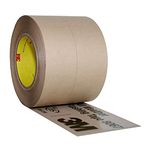
8067 All-Weather Flashing Tape
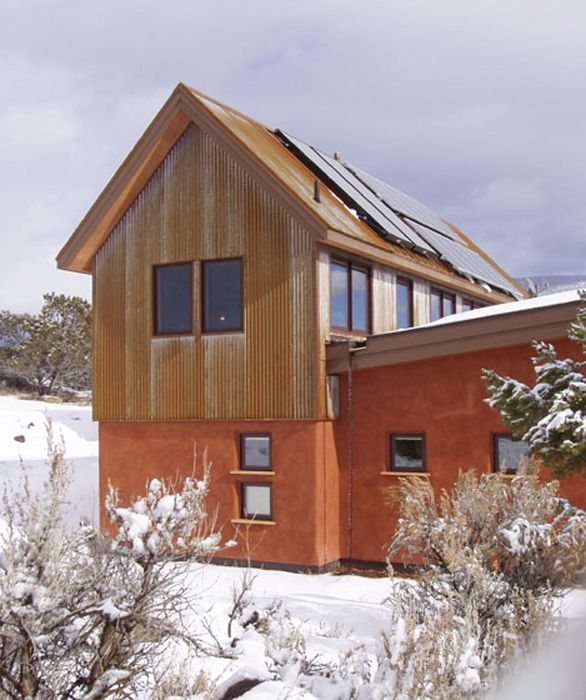
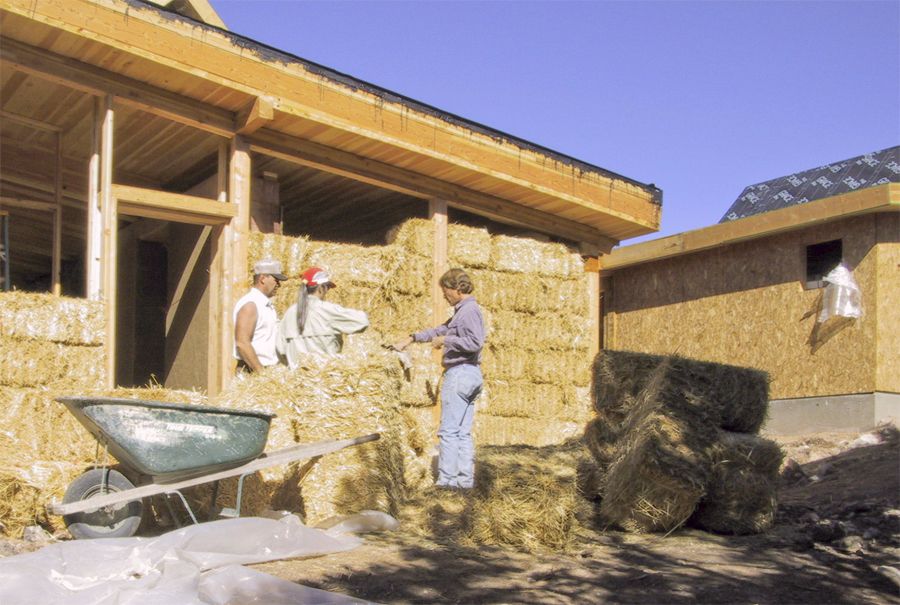

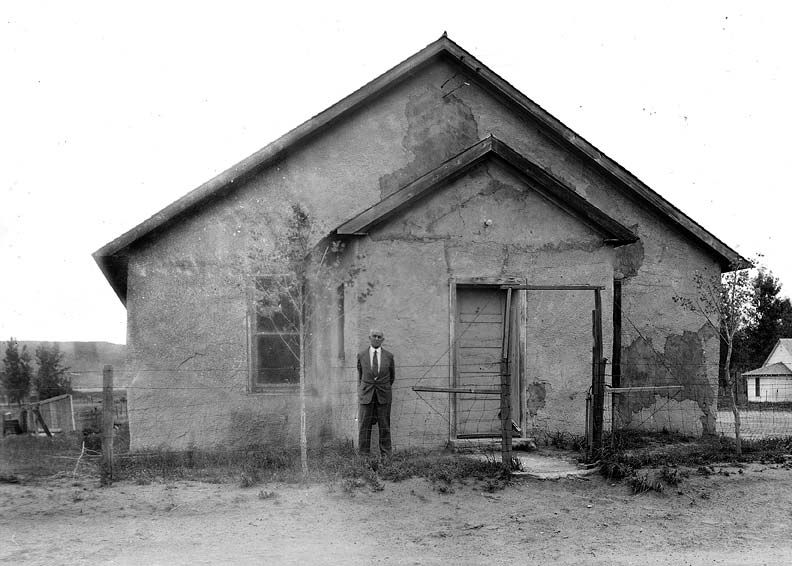























View Comments
a beautiful posting on the fascinating subject of strawbale construction embellished with poetic observations of the bounty of the land, the birds, the flowers, the beauty. it sounds like strawbale is similar to adobe? perhaps more durable and applicable to more environmental situations? I'd love to experience some time is such an abode--and the presence of migrating sandhill cranes.
Another great article by the expert carpenter and writer that Larry is!
J. Sliemers
I've been in a number of straw bale buildings and even helped build one--they're great, especially for those of us with limited building experience. But I especially appreciate your reflections on the flowers and the cranes. Sandhill cranes stop at a refuge in New Mexico, south of Albuquerque. I went there several times and took a number of people. Always amazing, and amazed. If you read fiction, you might enjoy The Echomaker by Richard Powers. It takes place along the Platte and sandhill cranes play and important role in the story.
Thanks for writing.